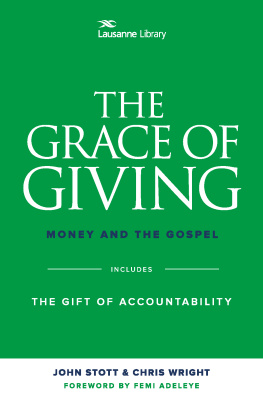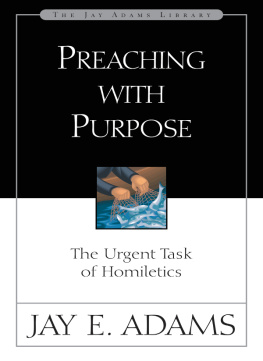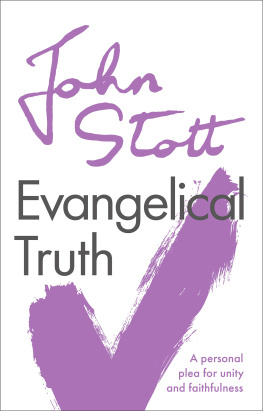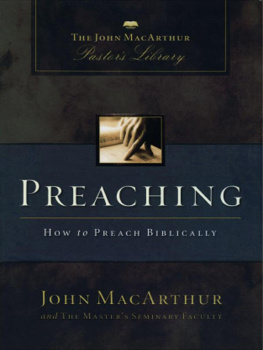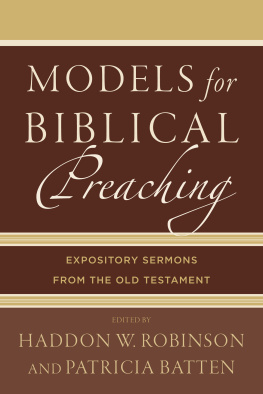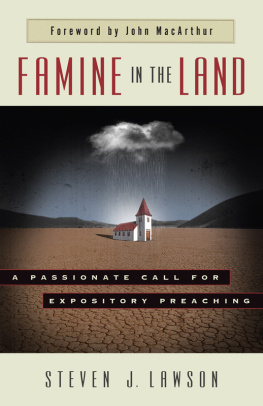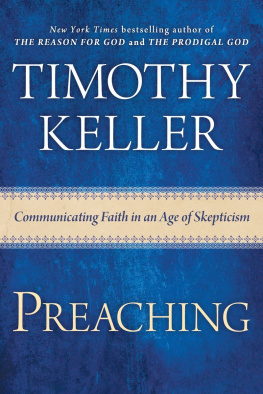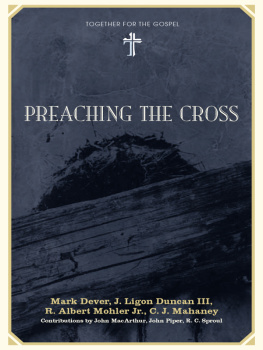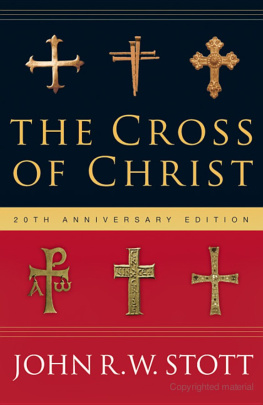Table of Contents
Copyright @ 1982 by John Stott
All rights reserved
First published 1982 in the U.K. by Hodder and Stoughton, London, under the title I Believe in Preaching
First American edition published 1982
through special arrangement with Hodder and Stoughton by
Wm. B. Eerdmans Publishing Co.,
255 Jefferson Ave. S.E., Grand Rapids, Michigan 49503
First American paperback edition published 1994
Printed in the United States of America
Reprinted 2000
L brary of Congress Cataloging-in-Publication Data
Stott, John R. W.
Between two worlds.
Bibliography: p. 341
1. Preaching. I. Title.
BV4211.2.S8 1982 251 81-22224
ISBN 0-8028-0627-9 AACR2
Editors Preface
It continues to be necessary today to take a fresh, biblical, positive look at some of the important areas of Christian belief and practice which have been neglected or minimized in modern times. Few areas so need that new look as preaching.
The standard of preaching in the modern world is deplorable. There are few great preachers. Many clergy do not seem to believe in it any more as a powerful way in which to proclaim the gospel and change the life. This is the age of the sermonette: and sermonettes make Christianettes.1 Much of the current uncertainty about the gospel and the mission of the Church must be due to a generation of preachers which has lost confidence in the Word of God, and no longer takes the trouble to study it in depth and to proclaim it without fear or favour.
John Stott is one of the few great preachers in Britain today. He has, moreover, been released into a ministry of writing and travel which takes him all over the world. It is, therefore, particularly gratifying that he has allowed himself to be persuaded to write this book which will take its place as one of the major treatments of the subject. It takes a preacher to write effectively about preaching, and that is what we have in this book.
A glance at the Contents will indicate the scope of this remarkable book. He shows the glorious heritage and the mighty effect of preaching over the centuries, and incidentally throughout this book displays an astonishing breadth and depth in his own reading on the subject. He faces head-on the objections to preaching; he marshals encouragement to preaching, and he shows how one foot of the preacher must always be anchored in the Bible and the other in the contemporary world. The chapters on the study and the preparation which make for effective preaching are full of wisdom and helpful advice, and will be both a challenge and an inspiration to preachers. But expertise by itself is not enough. The preacher must live his message and must by his humility and passion allow the Holy Spirit to work through him, and expect such preaching in the power of the Spirit to change lives.
The opening five words of this book aptly summarize its theme. Preaching is indispensable to Christianity. It is just that. And because he knows the truth, and feels it deeply, and has experienced its power all over the world, Dr. John Stott has produced a book which, like a good sermon, is addressed both to the head and to the heart; a book which aims to go through both head and heart to the will. For this book seeks to encourage and challenge all preachers to give themselves more wholeheartedly to their calling, to make known Gods way of salvation to a world that has lost its way. There is no higher vocation than that.
There are signs today in many parts of the world of a significant growth in the Christian Church. What is now needed is a revival of confident, intelligent, relevant, biblical preaching which will further that growth and build up mature disciples of Jesus Christ. If any book can stimulate such a revival in preaching, this is it.
MICHAEL GREEN
Easter, 1981
Note
1 Cf. p. 294.
Authors Introduction
It is a rash and foolhardy enterprise for any preacher to preach to other preachers about preaching. I certainly do not claim to be an expert myself. On the contrary, I confess that in the pulpit I am often seized with communication frustration, for a message burns within me, but I am unable to convey to others what I am thinking, let alone feeling. And seldom if ever do I leave the pulpit without a sense of partial failure, a mood of penitence, a cry to God for forgiveness, and a resolve to look to him for grace to do better in the future.
At the same time, I confess to being - for reasons which will emerge in the following chapters - an impenitent believer in the indispensable necessity of preaching both for evangelism and for the healthy growth of the Church. The contemporary situation makes preaching more difficult; it does not make it any less necessary.
A countless number of books have been written on preaching. I myself have read nearly a hundred books on homiletics, communication and related themes. How then can yet another be justified? If anything is distinctive about Between Two Worlds, I think it is that I have tried to bring together several complementary aspects of the topic, which have often been kept apart. Thus, in the opening historical survey I hope readers will feel, as I do, that there is a certain glory in the preaching ministry, which prepares us to face with integrity in the second chapter the problems which beset it today. Although in Chapters Five and Six I seek to give practical advice both on study and on sermon preparation, I say little about such matters as delivery, elocution and gesture. This is partly because these matters are best learned by being apprenticed to an experienced preacher, by trial and error, and by friendly critics. It is more because I want to put first things first, and because I believe that by far the most important secrets of preaching are not technical but theological and personal. Hence Chapter Three on Theological Foundations for Preaching and Chapters Seven and Eight on such personal characteristics of the preacher as sincerity, earnestness, courage and humility. Another particular emphasis I have made, born of growing experience and conviction, is on Preaching as Bridge-building (Chapter Four). A true sermon bridges the gulf between the biblical and the modern worlds, and must be equally earthed in both.
All preachers are aware of the painful tension between ideals and reality. Some readers will feel not only that I have included a plethora of quotations, but that too many of these come from authors who belong to a bygone age remote from our situation. As for quotations in general, I have simply wanted to share with others the fruits of my reading. Although I have also written with freedom and frankness out of my own experience, it would have been arrogant to confine myself to this. Preaching has an unbroken tradition in the Church of nearly twenty centuries. We have very much to learn from the great preachers of the past whose ministry God has so signally blessed. The fact that our reality differs from theirs seems to me no reason why we should not share their ideals.
Other readers will find me too idealistic in a different sense, namely that I do not take sufficient account of the problems under which many clergy labour today. They are overworked and underpaid. They are exposed to unrelenting intellectual, social, moral and spiritual pressures, of which our forefathers knew nothing. Their morale is low. Many suffer from loneliness, discouragement and depression. Some have several village congregations to care for (I think of a presbyter of the Church of South India who has thirty, with only a bicycle on which to visit them). Others are struggling in a decayed and neglected inner city area, with a handful of members and as yet no leaders. Do I not set impossibly high standards of study and preparation, which may be appropriate for a long-established urban or suburban church but not for a pioneer, church-planting situation ? Yes, it is true both that my own experience has been largely limited to All Souls Church in London and to similar churches elsewhere, and that I have had such churches mostly in mind while writing. Nevertheless, I have done my best to remember other situations.


